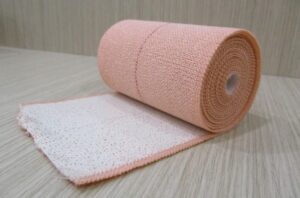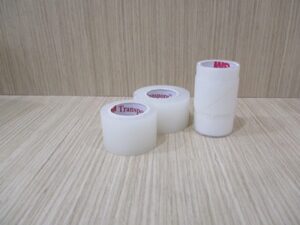Bandages are medical materials that are used to cover wounds and provide support to injured body parts. They come in a variety of types of bandages and are made from different materials.
Types of bandages
Here are some common types of bandages:
Adhesive Bandages: Also known as “band-aids,” adhesive bandages are small, flexible strips of material with an adhesive backing. They are typically used to cover small cuts and scrapes on the skin.
Gauze Bandages: Gauze bandages are made from a loosely woven fabric that allows air to circulate around the wound. They come in different widths and can be used to cover larger wounds, as well as to wrap around limbs or joints for support. e.g cotton bandage
Elastic Bandages:
Elastic bandages are made from a stretchy material that can be wrapped around limbs to provide support and compression. They are commonly used for sprains and strains and are available in different widths.

Compression Bandages: Compression bandages are similar to elastic bandages, but provide more pressure and support. They are often used to treat conditions such as lymphedema and venous ulcers. e.g Esmarch bandages
Cohesive Bandages:
Cohesive bandages are made from a self-adhering material that sticks to itself, but not to skin or hair. They are commonly used for wrapping joints and securing dressings.
Triangular Bandages: Triangular bandages are large, triangular pieces of fabric that can be folded into different shapes and used to support or immobilize injured limbs. They can also be used as a sling for arm injuries.
Pre-powdered Bandages
Application of Plaster of Paris (POP) needs a Pre-powdered bandage for better application and strength to the dressing.
T bandage
The bandage is in the shape of the letter T, made of pure cotton material.
It is used for the perineum and sometimes for the head.
Used for the female perineum and, in certain cases, the head.
Other Names: Buttocks bandage, crucial bandage, and T binder.
Tube Bandages: Tube bandages are stretchy tubes that can be pulled over limbs to provide support and compression. They are commonly used for sports injuries and are available in different sizes and compressions.
Overall, choosing the right bandage depends on the size and location of the wound, as well as the level of support and compression needed. It’s important to follow medical guidelines and consult with a healthcare professional when selecting and applying bandages to ensure proper healing and recovery